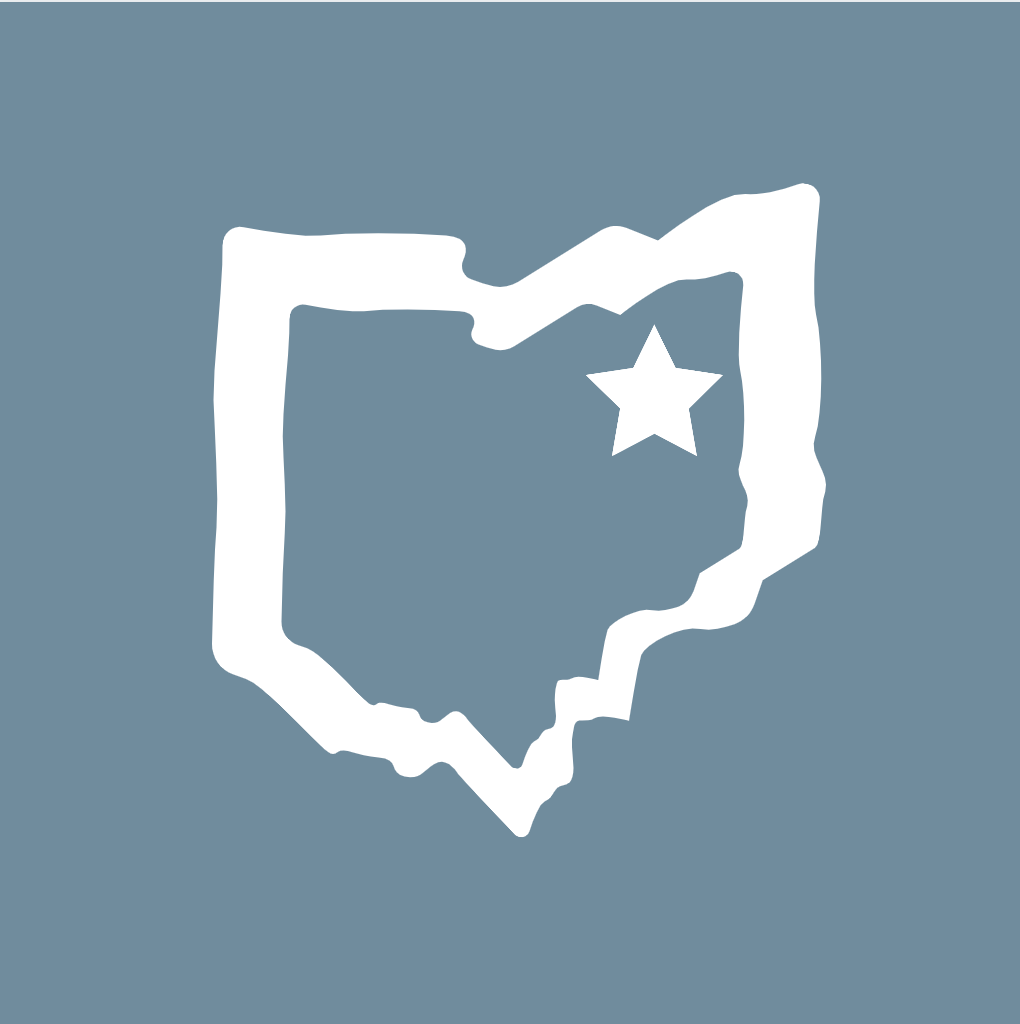Wooster’s German Community
- Home
- Cultural and Religious Communities
- Exhibits
- Wooster’s German Community
by Elisabeth Abell, revised by Glenna Van Dyke
Between 1770 and 1776, as many as 75,000 Germans immigrated to the Thirteen Colonies.1 Many started their new lives in Pennsylvania, and others still traveled further west into Ohio. There, they built their businesses and homes around the downtown square. Like many other ethnic groups, the new settlers bonded over their common language, culture, and religion, and formed their own community. While they were divided by the German Reformed or Lutheran beliefs, they shared the same church and reverend for over 50 years.
Early German Settlement and Religion
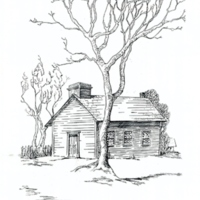
Wooster was first settled by mainly German immigrants, and they brought their culture with them. The Lutheran Germans were often skilled laborers who travelled from Pennsylvania to Ohio after the Revolutionary War. 1 The German Reformed however tended to be poorer indentured servants from the Rhineland area. The German Reformed believed in a very strict religion, that preached predetermination, or that only some had been chosen to go to heaven before birth- very similar to the English Puritans. Aside from their shared language, these two religious groups had little in common.2
By 1815, Wooster had grown significantly due to the influx of German immigrants. A pastor was needed to perform all the various duties of a church such as baptisms, marriages, and funerals. Rev. D. Henkel, a Lutheran missionary, was the first in Wooster to preach in German in 1815, though he did not stay in town for long. 3 In 1819, German Reformed Rev. Henry Sonnedecker preached for both religious groups. The two congregations officially joined in 1820 and formed the “German Lutheran and Reformed Church of Wooster and its Vicinity”. They met every Sunday in a little brick schoolhouse that they named the “Peace Church.” 4 However, peace wouldn’t last for long. The two congregations couldn’t work out their differences over their religious teachings and split in 1827. Despite their split, they continued to share the building until 1844.
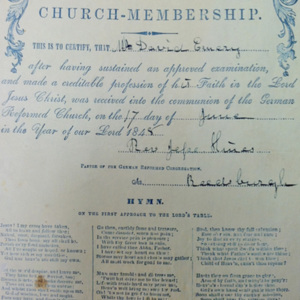
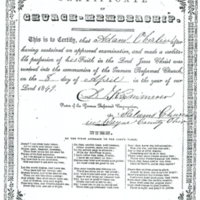
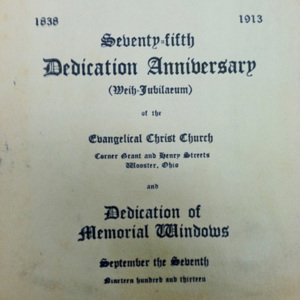
Wooster’s Religious German Legacy
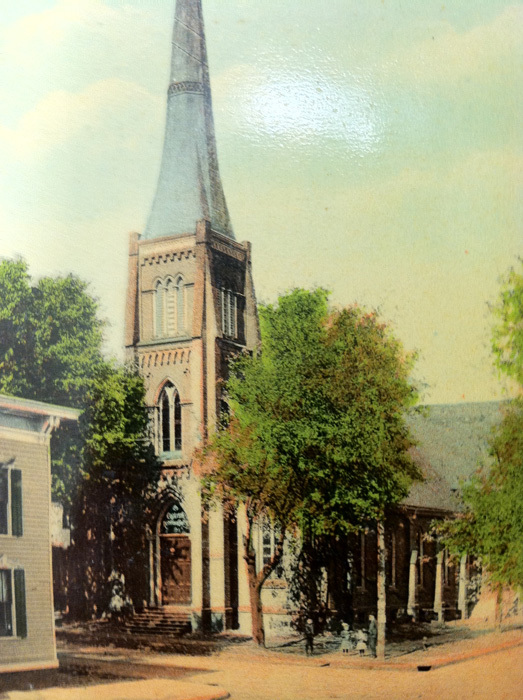
Today, many of the Lutheran Churches in Wooster claim to be descendants of Reverend Sonnedecker’s first joined Reformed and Lutheran church of 1819. One early example is Salem Lutheran Church, the first exclusively Lutheran congregation in the area which was founded in 1827, by Rev. G. H. Weygandt.5 Another example is Jacob’s Lutheran Church, which broke off from the origional “Peace Church” in 1844.6 Historians believe that the language barriers and nativist feelings, especially after new waves of Germans came to Wooster in the 1830s, caused the original church to split into several smaller ones. Jacob’s Lutheran Church, who broke off from Die Freidens’ Kirche in 1844, is another example of this separation.
While the Lutherans began to divide into smaller churches, the German Reformed remained as one, though attendance dwindled. What remained of the Reformed Congregation was eventually absorbed by the Lutheran Christ Church to form the United Church of Christ in 1953. 7 The merging of these two churches in Wooster would reflect a similar national shift four years later, when the Reformed Church was combined with the Evangelical and Reformed Church to form the United Churches of Christ.8
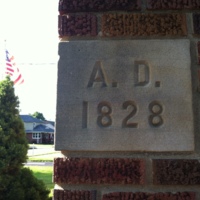
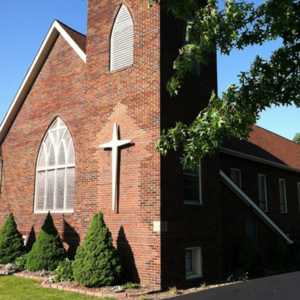
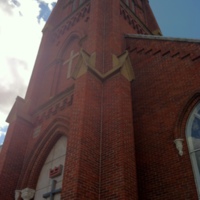
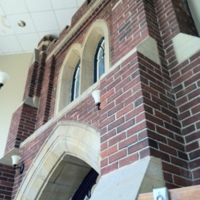
Wooster: Home Of the Christmas Tree?
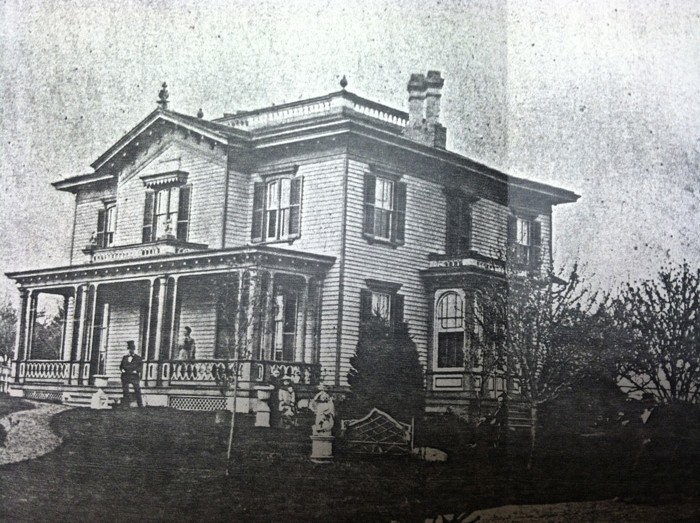
Every Winter, the Wooster Cemetery decorates a large evergreen tree for Christmas. The tree stands majestically in front of the man who, according to legend, brought the first Christmas tree from Bavaria to America in 1847. This man, August Imgard, a tailor by trade, was feeling homesick for his native Bavaria and so he cut down a Christmas tree to decorate at his brother Peter’s home. 9 People saw it and it was an immediate sensation. By the next winter, several shops in town were selling Christmas tree decorations. 10
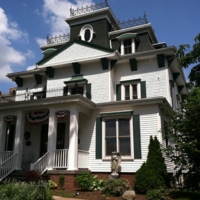
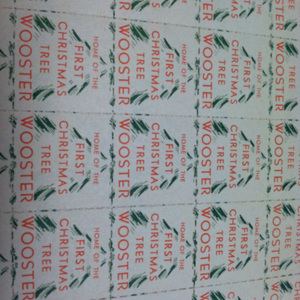
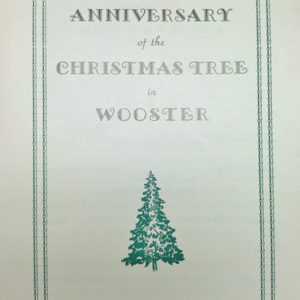
Wooster tradition claimed that Imgard was the first person to not only bring the trees to Wooster, but also to the entire United States. While this is a great story, historians doubt that it is fact. The Ohio Historical Society cites early letter from the Krausnick and Rehfuss families in Cincinatti which show that Christmas trees were in the U.S. as early as 1835. 11
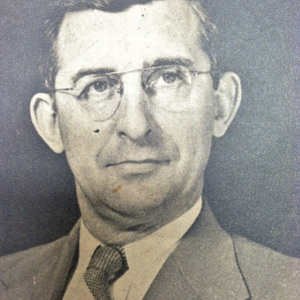
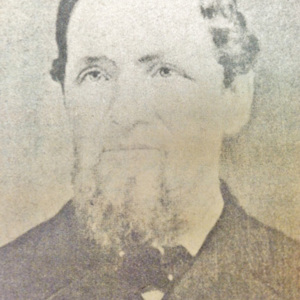
Jacob’s Lutheran Cemetery
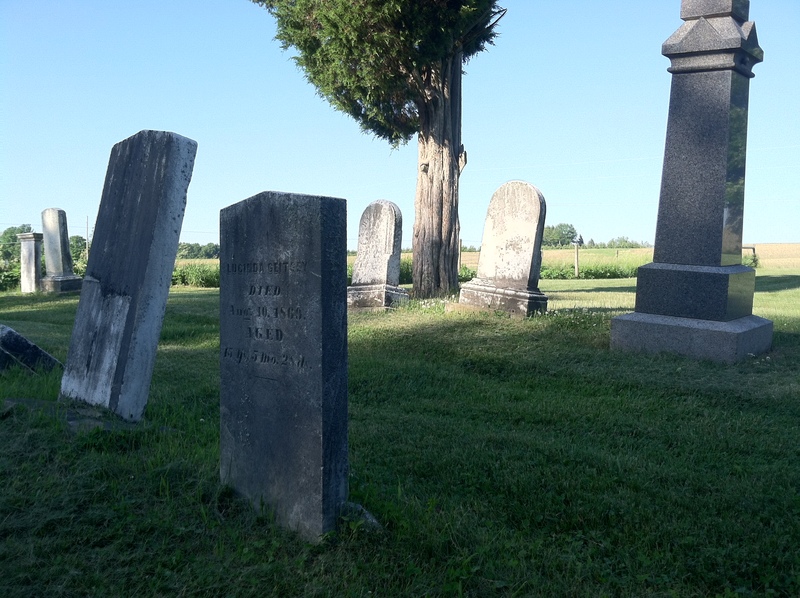
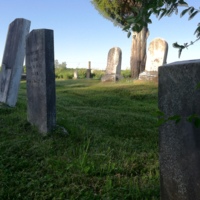
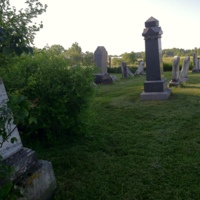
Just south of Wooster, in Franklin Township, lies the remnants of an important site to the early German settlers in the local area: Jacob’s German Lutheran Church. The Church was built in 1844 by seven families who went ahead and built their own church and were dissatisfied with the English-leanings of Die Freidens’ Kirche and Rev. Weygandt’s congregation.12 The modest, one-room church stood on land donated by one of the members, Jacob Herman, and Rev. Kline became their preacher.13 Then, for an unknown reason, the church was abandoned around 1870. However, if you go to the junction of Oil City Road and East Messner Road (about 10 minutes from Downtown), you can still see the old foundation of the church.
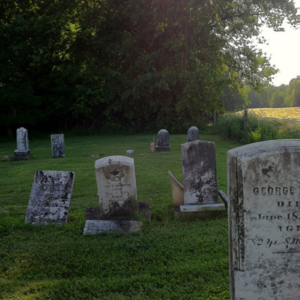
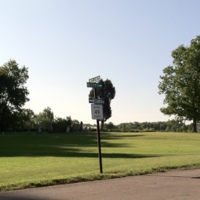
Sources
1 Peter W. Williams, America’s Religions: From Their Origins to the Twenty-first Century, (Chicago: University of Illinois Press, 1990), 126.
2 Jon Butler, Grant Wacker, and Randall Balmer, Religion in American Life: A Short History (Oxford: Oxford University Press, 2000), 77.
3 Ben Douglass, History of Wayne County, Ohio (Indianapolis, IN: Robert Douglass,1878), 392-397.
4 Leo A. Keil, A History of The First Reformed Church, The First Evangelical and Reformed Church, The Trinity United Church of Christ, Wooster, Ohio (1993), 1.
5 Bonnie Knox and Larry Knox, Salem Lutheran Church Wayne County, Ohio, Cemetery.
6 Ben Douglass, History of Wayne County, Ohio (Indianapolis, IN: Robert Douglass,1878), 392-397.
7 Leo A. Keil, A History of The First Reformed Church, The First Evangelical and Reformed Church, The Trinity United Church of Christ, Wooster, Ohio (1993), 1.
8 Peter W. Williams, America’s Religions: From Their Origins to the Twenty-first Century, (Chicago: University of Illinois Press, 1990), 127.
9 Cleveland Plain Dealer Pictorial Magazine, December 23, 1951.
10 Daily Record, December 17, 1979.
11 “Echoes,” Ohio Historical Society 3, no.12 (December 1964).
12 Jess Ewing, History of Jacobs and Trinity Lutheran Churches, Wayne County, Ohio (1990), 1.
13 Bonnie S. Wipert, Church Histories of Wayne County, Ohio (1987), 51.
How to site this page:
MLA: “Wooster’s German Community.” stories.woosterhistory.org, http://stories.woosterhistory.org/woosters-german-community/. Accessed [Today’s Date].
Chicago: “Wooster’s German Community.” stories.woosterhistory.org. http://stories.woosterhistory.org/woosters-german-community (accessed [Today’s Date]).
APA: (Year, Month Date). Wooster’s German Community. stories.woosterhistory.org. http://stories.woosterhistory.org/woosters-german-community.
